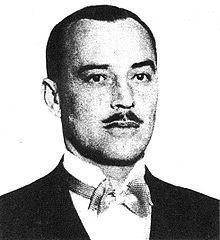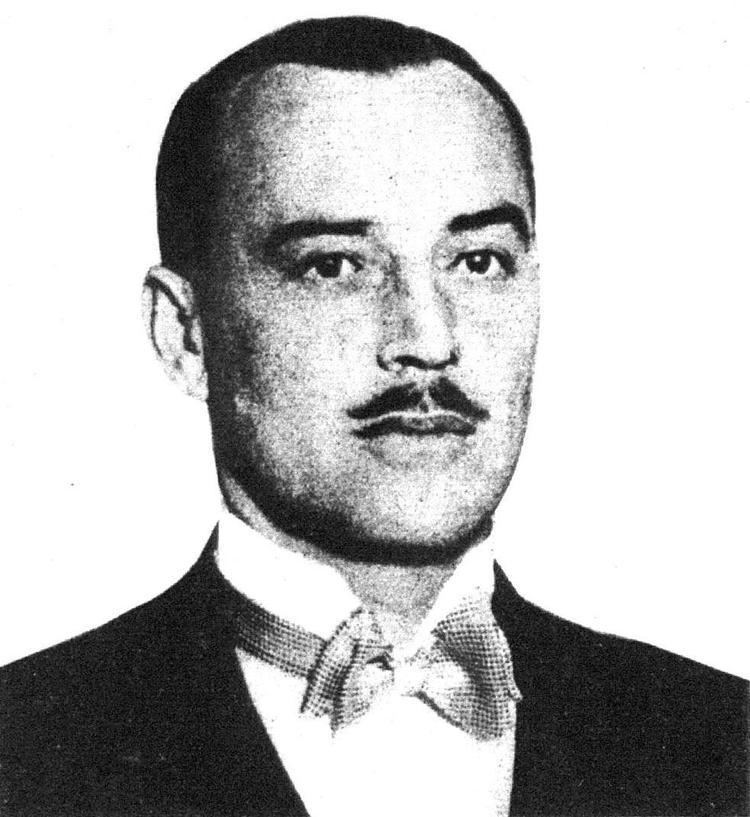Monarch George V Resigned December 8, 1923 | Preceded by The Viscount Allenby Monarch George V Name George 1st | |
 | ||
Preceded by The Marquess of Willingdon Spouse Blanche Lascelles (m. 1911) Succeeded by Walter Guinness, 1st Baron Moyne Education Trinity College, Cambridge, Eton College | ||
George Ambrose Lloyd, 1st Baron Lloyd (19 September 1879 – 4 February 1941) was a British Conservative politician strongly associated with the "Diehard" wing of the party.
Contents

Background and education
Lloyd was born at Olton Hall, Warwickshire, the son of Sampson Samuel Lloyd (whose namesake father was also a Member of Parliament) and Jane Emilia, daughter of Thomas Lloyd. He was educated at Eton and Trinity College, Cambridge. He coxed the Cambridge crew in the 1899 and 1900 Boat Races. He left without taking a degree, unsettled by the deaths of both his parents in 1899, and made a tour of India.
Early life
In 1901 Lloyd joined the family firm Stewarts & Lloyds as its youngest director. In 1903 he first became involved with the tariff reform movement of Joseph Chamberlain. In 1904 he fell in love with Lady Constance Knox, daughter of the 5th Earl of Ranfurly, who forbade the match with his daughter considering him unsuitable (she then married Evelyn Milnes Gaskell, son of Rt. Hon. Charles Gaskell, in November 1905). In 1905 he turned down an offer by Stewarts & Lloyds of a steady position in London and chose to embark on a study of the East in the British Empire. Through the efforts of his friends Samuel Pepys Cockerell, working in the commercial department of the Foreign Office, and Gertrude Bell, whom he had come to know, he started work as an unpaid honorary attaché in Constantinople. At "Old Stamboul" – as he came to remember the Embassy of Sir Nicholas O'Conor – he worked together with Laurence Oliphant, Percy Loraine and Alexander Cadogan. There also he first met Mark Sykes and Aubrey Herbert. In April 1906 Aubrey Herbert joined him on an exploration of the state of the Baghdad Railway. His confidential memorandum of November 1906 on the Hejaz railway gave a detailed account of many economic problems. This, and other papers – on Turkish finance, for example – led to his appointment in January 1907 as a special commissioner to investigate trading prospects around the Persian Gulf.
Political career
At the January 1910 general election Lloyd was elected as a Liberal Unionist Member of Parliament (MP) for West Staffordshire, marrying Blanche Lascelles the following year. In February 1914, Lloyd was adopted as Unionist Parliamentary candidate for Shrewsbury ahead of the next general election (expected no later than 1916) when the sitting MP, unrelated namesake George Butler Lloyd, intended to retire.
The general election and his candidacy were both forestalled by the outbreak of the First World War, while the sitting member continued to hold his seat until 1922. He and another backbench colleague in Parliament, Leopold Amery, lobbied the Conservative leadership to press for an immediate declaration of war against Germany on 1 August 1914. As a Lieutenant in the Warwickshire Yeomanry, Lloyd was called up after Britain entered the war three days later.
During that war he served on the staff of Sir Ian Hamilton at Gallipoli landing with the ANZACs on the first day of that campaign; took part in a special British mission to Petrograd to improve Anglo-Russian liaison; visited Basra to update his study of commerce in the Persian Gulf; and, after a time in Cairo, with T. E. Lawrence and the Arab Bureau in Hejaz, the Negev and the Sinai desert. He reached the rank of Captain in the Warwickshire Yeomanry (in which regiment he continued to hold rank until 1925) and was awarded the Distinguished Service Order and made Companion of the Indian Empire in 1917. For services in the same war he also received the Russian Empire's Order of St Anne, 3rd Class and the Order of Al Nahda (2nd class) of the Kingdom of Hejaz.
In conjunction with Edward Wood (later Earl of Halifax) he wrote The Great Opportunity in 1918. This book was meant to be a Conservative challenge to the Lloyd George coalition and stressed devolution of power from Westminster and the importance of reviving English industry and agriculture.
In December 1918 he was appointed Governor of Bombay and made KCIE. His principal activities while Governor were reclaiming land for housing in the Back Bay area of the city of Bombay and building the Lloyd Barrage (now Sukkur Barrage) an irrigation scheme, both of which were funded by loans raised in India instead of in England. Lloyd's administration was the first to raise such funds locally. His province was one of the centres of Indian nationalist unrest, to deal with which he insisted in 1921 on the arrest of Mahatma Gandhi, who was subsequently gaoled for six years for sedition. He completed his term as Governor in 1923 and was made a Privy Counsellor and GCSI.
He returned to Parliament again for Eastbourne in 1924, serving until 1925, when he was made Baron Lloyd, of Dolobran in the County of Montgomery, called after his Welsh ancestral home. Following his ennoblement, he was appointed High Commissioner to Egypt, serving until his resignation was forced upon him by Foreign Secretary Arthur Henderson in 1929. His views and experience formed the background of a self-justifying two-volume book, Egypt Since Cromer (published 1933–34).
During the 1930s he was one of the most prominent opponents of proposals to grant Indian Home Rule, working alongside Winston Churchill against the National Government. From 1931 to 1935 Lord Lloyd employed James Lees-Milne as one of his male secretaries.
He was suspicious of Adolf Hitler and the Nazi movement, which he saw as a threat to Britain. He was agitating for rearmament against Germany as early as 1930, before Churchill did.
When Churchill became Prime Minister in May 1940, he appointed Lloyd as Secretary of State for the Colonies and in December of that year he conferred on him the additional job of Leader of the House of Lords.
Lord Lloyd was a leading proponent of the future London Central Mosque. As early as 1939 he worked with a Mosque Committee, comprising various prominent Muslims and Ambassadors in London. After joining Churchill's cabinet, he sent a memo to the Prime Minister, pointing out that London contained "more [Muslims] than any other European capital" but that in the British Empire "which actually contains more Moslems (sic) than Christians it was anomalous and inappropriate that there should be no central place of worship for Mussulmans [sic]". He believed the gift of a site for the mosque would serve as "a tribute to the loyalty of the Moslems of the [British] Empire and would have a good effect on Arab countries of the Middle East”.
Other interests
In commerce, Lloyd was also director of the British South Africa Company and Wagon Lit Holdings.
In his fifties he trained for and obtained a civil pilot's certificate in 1934, and in 1937 was appointed Honorary Air Commodore of No 600 (City of London) (Fighter) Squadron of the Auxiliary Air Force, with which he insisted on training himself to qualify as a military pilot.
From 1937 he was Chairman of the British Council, in which capacity he oversaw an increase in lectureships and during the early months of the Second World War made cultural tours of neutral capitals to maintain sympathy for Britain's cause. In peacetime he habitually travelled in tropical countries every two months.
Family
Lord Lloyd married Blanche Lascelles, daughter of the Hon. Frederick Lascelles, in 1911. He died of myeloid leukaemia at a clinic in Marylebone, London, in February 1941, aged 61 and was buried at St Ippolyts, Hertfordshire. He was succeeded in the barony by his son, Alexander. Lady Lloyd died in December 1969, aged 89. He was known to be homosexual.
Biography
Lord Lloyd and the decline of the British Empire, John Charmley, Weidenfeld 1987
